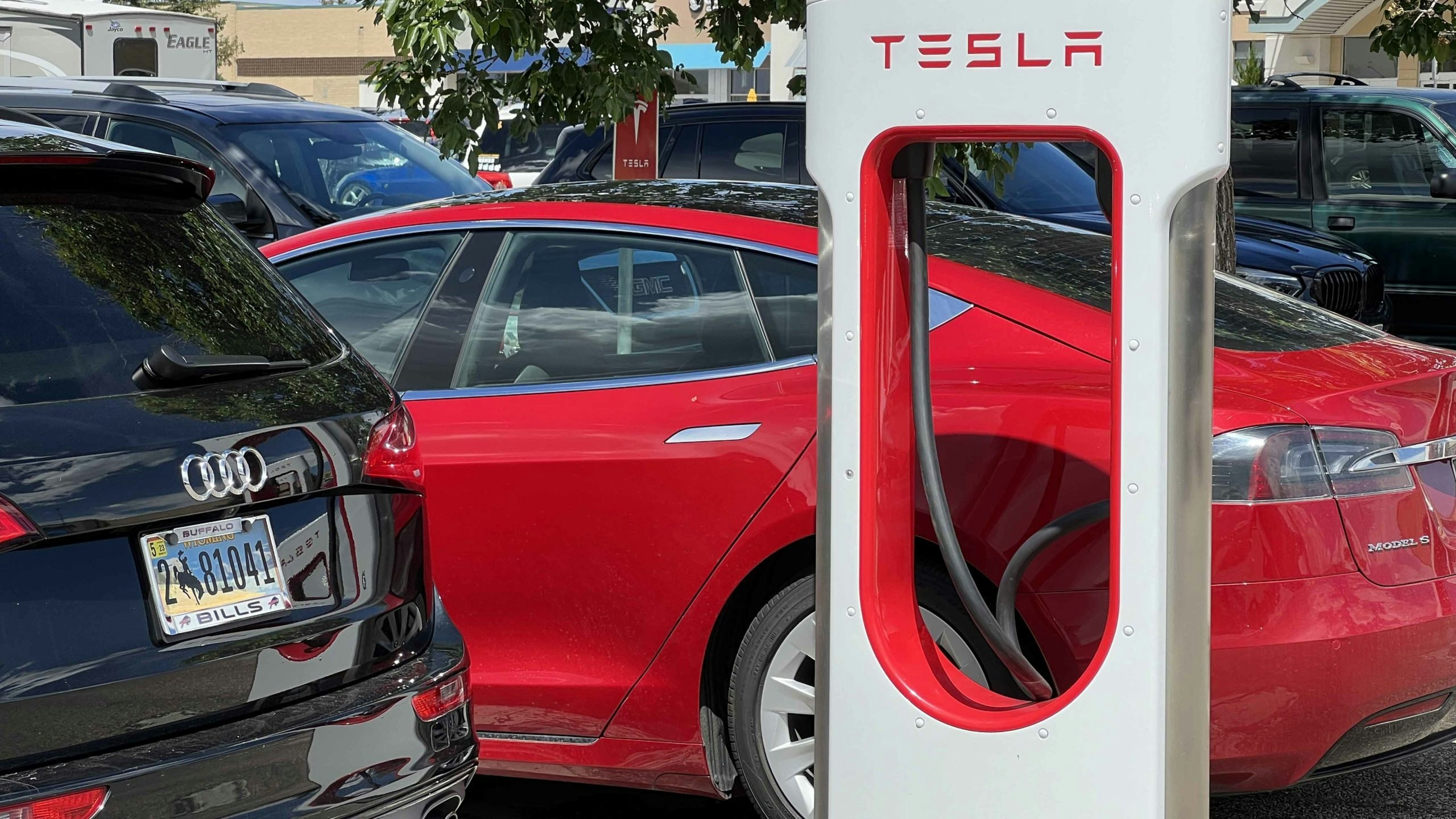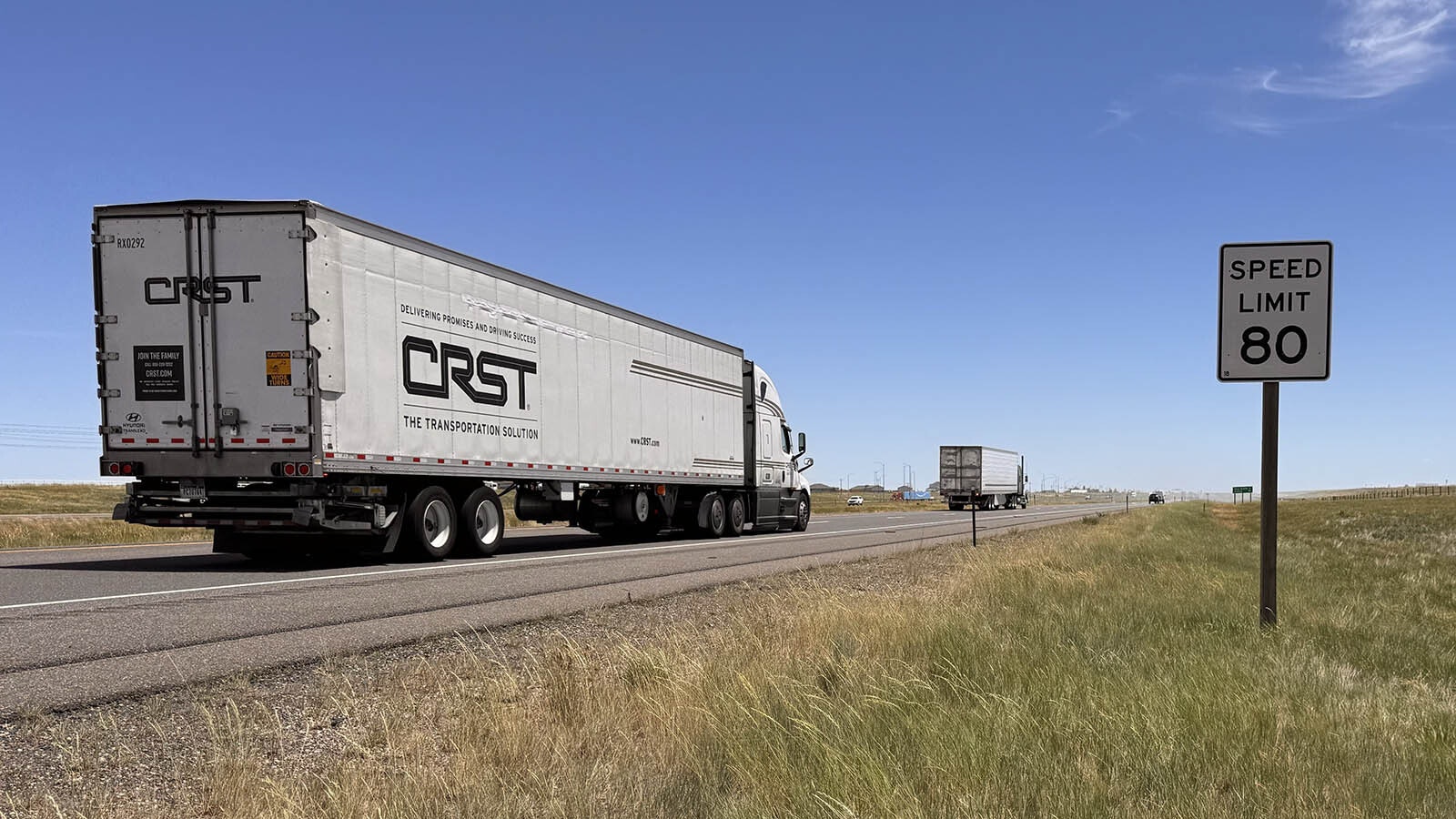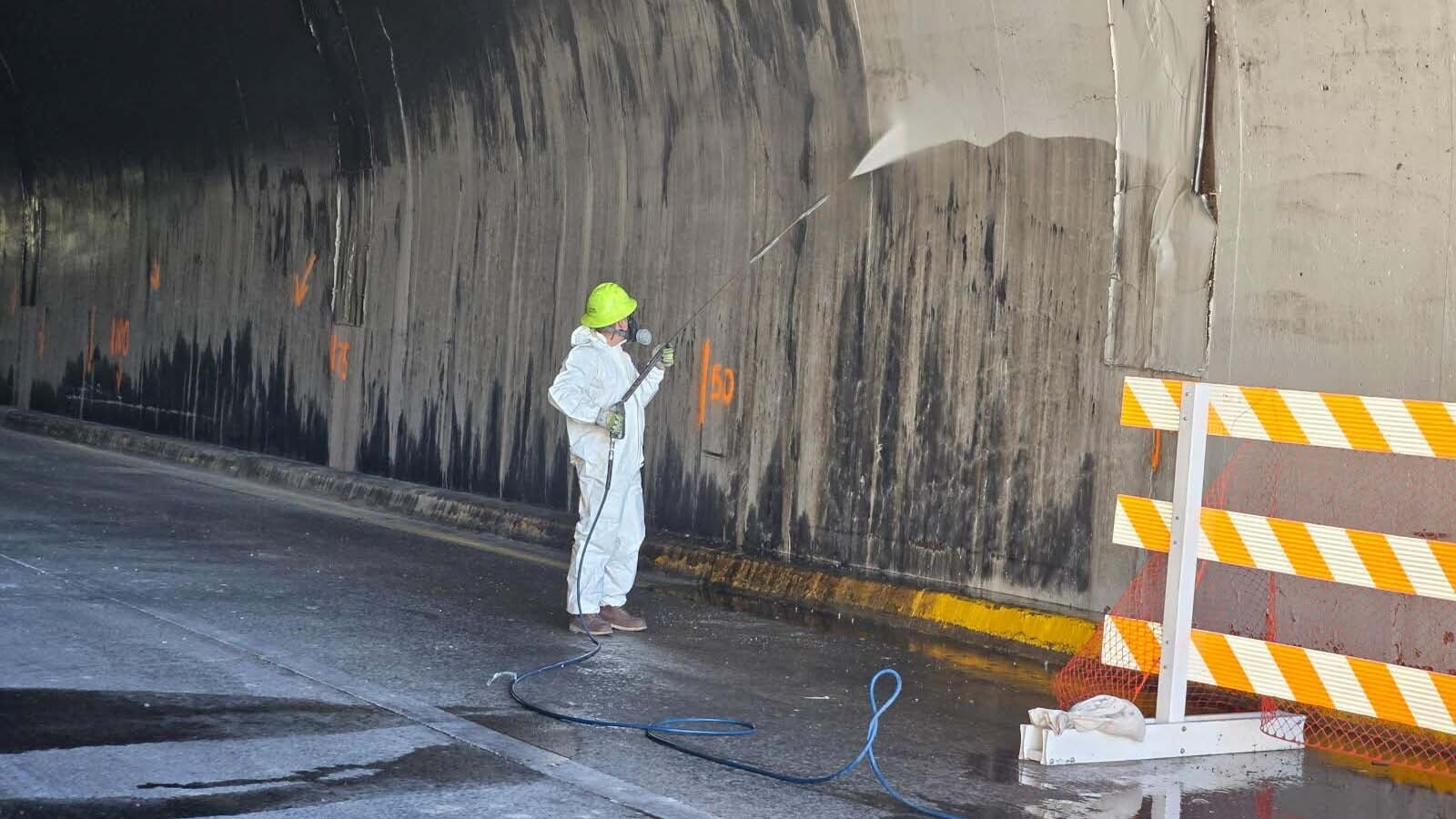The federal government is providing about $24 million to the state of Wyoming to build electric vehicle (EV) charging stations along Wyoming’s three interstates.
Jesse Kirchmeier, special projects officer with the Wyoming Department of Transportation, said that if the state’s traffic projections are correct, stations built with the money won’t likely be self-sustaining for at least 20 years.
WYDOT Director Luke Reiner told Cowboy State Daily that the state pursued the funding in anticipation of more tourists coming to Wyoming in EVs.
With tourism being the second largest economic driver in the state, Reiner said it’s in the state’s interest to facilitate their driving needs.
“It is important to us as a state that we do get some of this capability here to support the nice lady in Iowa who wants to bring her electric car to Wyoming,” Reiner said.

Initial Guidance
The Federal Highway Administration has yet to issue final rules about requirements for the National Vehicle Infrastructure (NEVI) Formula Program, and WYDOT won’t be able to issue requests for proposals (RFPs) to determine how much interest the state will get from private companies wanting to build charging stations with the money.
According to the initial guidance from the administration, the stations need to have four 150-kilowatt charging ports at each station, which have to be placed every 50 miles and within a mile of the interstate.
In rural areas like Wyoming, that’s a lot of energy to deliver to a place with no existing infrastructure.
The NEVI money requires a 20% match from a private partner, but no funding from the state.
The federal funds can be used to cover any construction costs, transformers and other electrical upgrades at the site, along with repairs and upgrades of existing charging stations. It also can be used to support operations at the stations for up to five years.
Stranded Assets?
This raises a question that if the stations can’t be profitable for possibly another 20 years, will they become “stranded assets” that are abandoned with the feds no longer providing support?
That also could make it difficult to attract the private sector to invest in charging stations that won’t operate in the black for so long.
Reiner said there are a lot of unknowns, which makes it difficult to know what’s going to happen in the world of EVs in the next five years.
“Our crystal ball is not great,” Reiner said.
Mitigating Risks
In planning for the NEVI funding, Reiner said state officials had a lot of concerns, so they tried to design Wyoming’s program to mitigate the risk to the state, meaning that whatever happens with the stations, Wyoming taxpayers shouldn’t be on the hook for anything.
“It could be that we, as a nation, figure out EVs aren’t going to work so well for us. And that could change the picture,” Reiner said.
It’s also possible that the market overcomes supply chain issues that are inflating costs of EVs and making them harder to obtain, leading to a flood of EVs on America’s highways, he said.
“We’re in a good place to just sort of see what happens with this technology and adjust,” Reiner said.
Buy America
As with most federal funding opportunities, there are a number of other requirements, such as “buy America” rules that demand the stations use mostly U.S.-made components.
There aren’t a lot of manufacturers in the U.S. that can satisfy that requirement, and with funding going out to every state, there will be a lot of a demand for a limited number of suppliers.
That’s on top of requirements of the National Environmental Policy Act, the Americans with Disabilities Act and laws that prohibit charging stations in rest areas.
Still Years Out
Kirchmeier said that it could also take a couple years before stations built under the program become operational. It’s only then that the five-year limit on operational support begins.
All the federal requirements might delay construction and the start of operations.
The final rules, when they’re issued in the next couple of months, may provide more flexibility, Kirchmeier said. But the expectation is WYDOT will issue RFPs in the next month or two.
It may be late summer before WYDOT makes any decisions on the proposals. Then, it might be two years before construction is complete.
That means it’s going to be a while before cars can plug in at stations funded through the program, so there’s time to see how the market in EVs plays out.
$1 Million
The initial funding will pay for seven stations, with each one costing about $1 million to build.
Some private companies, including Tesla, now operate more than a dozen charging stations in Wyoming. The plan WYDOT submitted places NEVI stations where there are currently big gaps between charging opportunities.
The Tesla stations are not “public facing,” meaning they’re not for anyone with an EV. They only serve Tesla drivers.
The company has said it intends to install connectors that work with other types of EVs, but so far, no official announcement has been made. It’s still possible that Tesla could pursue federal money to pay for those modifications.
Without being open to the wider public, Tesla stations wouldn’t be eligible for funding.
“When we looked at where we weren’t going to put ours, we did not assume that the Tesla stations would be public facing,” Kirchmeier said.
The state’s plan now is to put stations in Sundance, Buffalo, Sheridan, Douglas, Wheatland, Pine Bluffs and Laramie.
Cheap To Operate
Patrick Lawson, owner of Wild West EV, said he’s keeping an eye out for the RFPs. The Riverton-based company runs five charging stations in Riverton, Lander, Hudson, Cody and Dubois.
Lawson said the Dubois station receives so little traffic that it’s not profitable. However, the other stations get enough traffic that the operation as a whole generates enough money to be sustainable.
They also don’t require much overhead. Unlike gas stations, charging stations have no full-time attendants to hire, nor do they have to have trucks shipping in fuel every day. That keeps everyday costs low.
It’s likely that companies building and operating stations with NEVI funding will be able to run even after the five-year operational support dries up, Lawson said.
Infrastructure
The big cost for any station is the infrastructure to support it, and the construction expenses.
“Maybe some smaller operations might sell out to bigger operations. I think somebody would take it over,” Lawson said.
Wild West EV opened its first station in 2016. As a small business, Lawson has sustained the company for six years.
Next week, Lawson is driving to Las Vegas for a manufacturer convention, where U.S. companies will promote their charging stations products that meet the “buy American” federal requirement.
“There’s a bunch of companies getting ready for it. They’ve got newer charges that are faster and cheaper, can handle more cars and stuff,” Lawson said.
Wait And See
With all the federal requirements and not much EV traffic in Wyoming to generate revenue at charging stations, there is the question if any company will respond to the RFPs.
Kirchmeier said there’s a reason why Wyoming was one of the last states where Electrify America, which has been building out charging stations across the United States, chose to build stations.
Other major charging station operators haven’t shown any interest in Wyoming.
“They’re doing the business analysis, and they’re seeing that there’s just not enough traffic. So, I personally have concerns,” Kirchmeier said.
However, when the final rules for the program are released, there may be more flexibility. The feds may reduce the requirement that the stations have four charging ports. With one or two, stations would be cheaper to build and operate, which would make the return on investment more favorable.
“We’ll push out the RFP, and we’ll see what happens, because some electric cars are coming into town,” Reiner said. “And it is important for us to have a way to facilitate that traffic in the state, which means we need these stations.”





